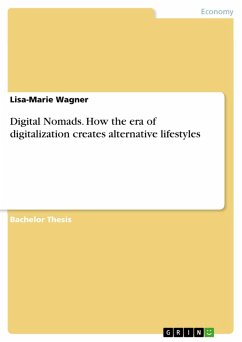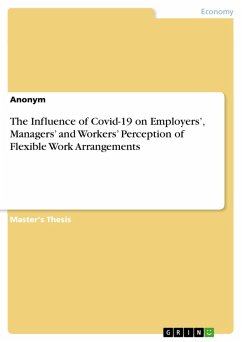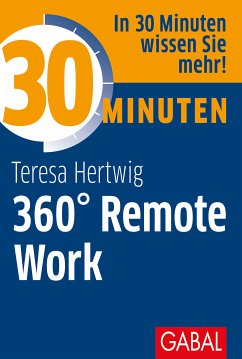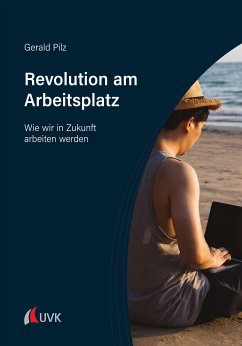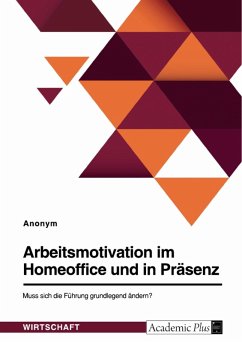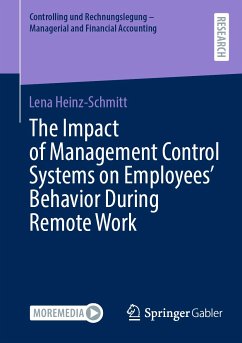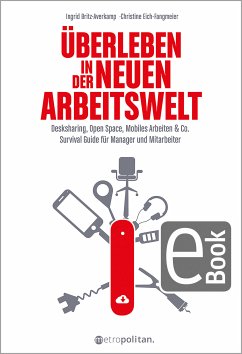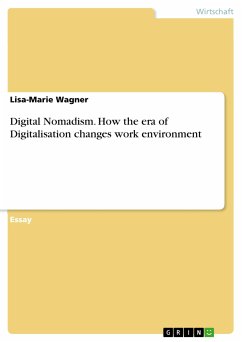
Digital Nomadism. How the era of Digitalisation changes work environment (eBook, PDF)
Sofort per Download lieferbar
Statt: 18,95 €**
16,99 €
inkl. MwSt. und vom Verlag festgesetzt.
**Preis der gedruckten Ausgabe (Broschiertes Buch)
Alle Infos zum eBook verschenkenWeitere Ausgaben:

PAYBACK Punkte
0 °P sammeln!
Essay aus dem Jahr 2018 im Fachbereich BWL - Unternehmensführung, Management, Organisation, Note: 1,0, FOM Hochschule für Oekonomie & Management gemeinnützige GmbH, München früher Fachhochschule, Veranstaltung: Business Communication Skills, Sprache: Deutsch, Abstract: This paper deals with the changed situation of traditional workplaces, flexible living and working models such as the digital nomadism and shows how digitization is fundamentally changing the world of work, especially the flexibility of the workplace. It will explain what will be demanded of traditional employees and digita...
Essay aus dem Jahr 2018 im Fachbereich BWL - Unternehmensführung, Management, Organisation, Note: 1,0, FOM Hochschule für Oekonomie & Management gemeinnützige GmbH, München früher Fachhochschule, Veranstaltung: Business Communication Skills, Sprache: Deutsch, Abstract: This paper deals with the changed situation of traditional workplaces, flexible living and working models such as the digital nomadism and shows how digitization is fundamentally changing the world of work, especially the flexibility of the workplace. It will explain what will be demanded of traditional employees and digital nomads in the future, which opportunities and risks will arise, and which adjustments traditional companies will have to make. For example, the demands on employees, especially their soft skills, will change fundamentally in the coming years. Intercultural competencies and analytical skills will gain in importance. Also digital nomads have to face challenges, which are similar to traditional self-employed and freelancers. Companies must continue to monitor future change and prepare their employees for future requirements. Recruitment processes in human resources departments will also change in the future, because recruiting based on specialist knowledge alone will no longer be sufficient. The work is divided into a theoretical part and a practical part. In the theoretical part, the terms that provide the fundamental basis of the work are explained and delimited and the concept and development of Digital Nomadism is presented. In a further step, the possibilities for the practice of location-independent work are examined. In the practical part, the advantages and disadvantages of Digital Nomadism, opportunities and challenges are presented and, building on these, possible recommendations for action and possible future strategies for employees, the self-employed and traditional companies are derived. Subsequently, a conclusion will be drawn and an outlook will be given on possible further research fields which could be the subject of other scientific papers. Primarily digital publications of literature and statistics were used for research on this new form of work, which is characterized by rapid change and transformation. In order to build the work on current research results, mainly sources published in the last four years were used.
Dieser Download kann aus rechtlichen Gründen nur mit Rechnungsadresse in A, B, BG, CY, CZ, D, DK, EW, E, FIN, F, GR, HR, H, IRL, I, LT, L, LR, M, NL, PL, P, R, S, SLO, SK ausgeliefert werden.




